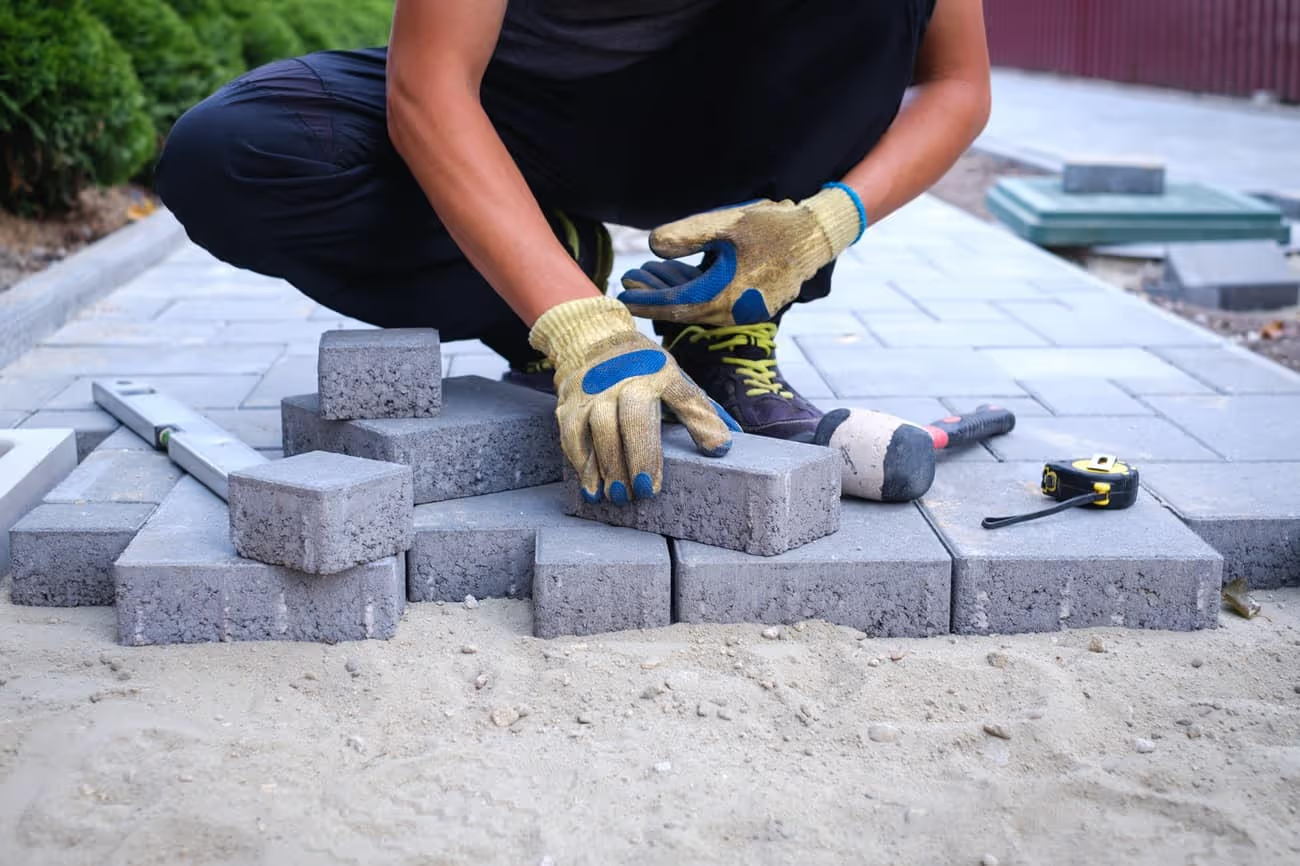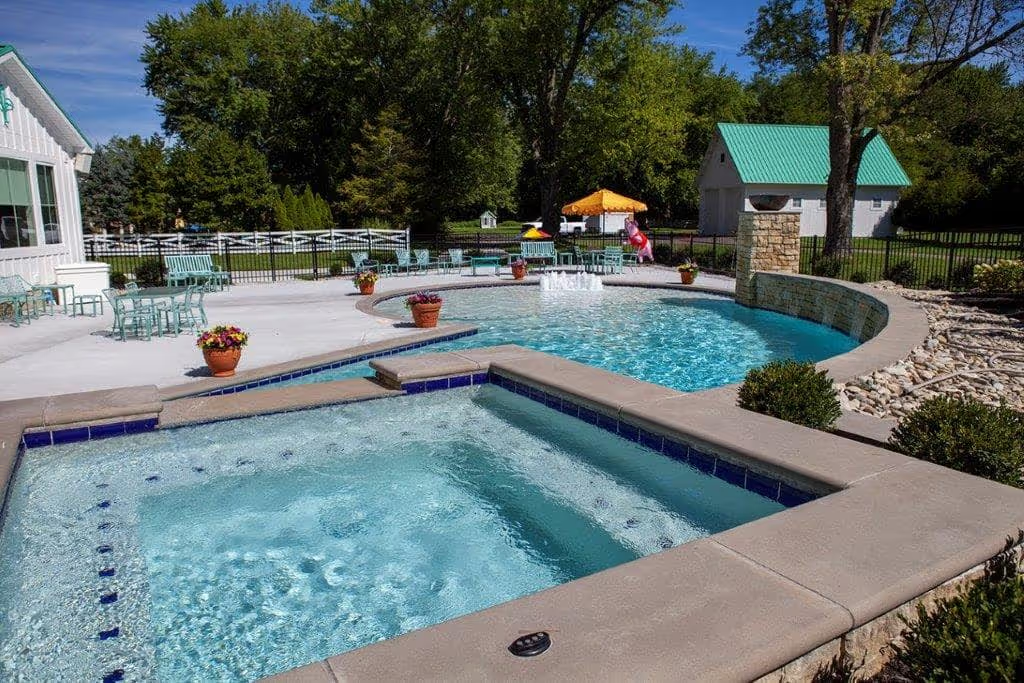- Stone Center
- Blog
Average Stone Fireplace Cost in Ohio: Complete 2025 Overview
17/12/2025
8/21/2025
Average Stone Fireplace Cost in Ohio: Complete 2025 Overview
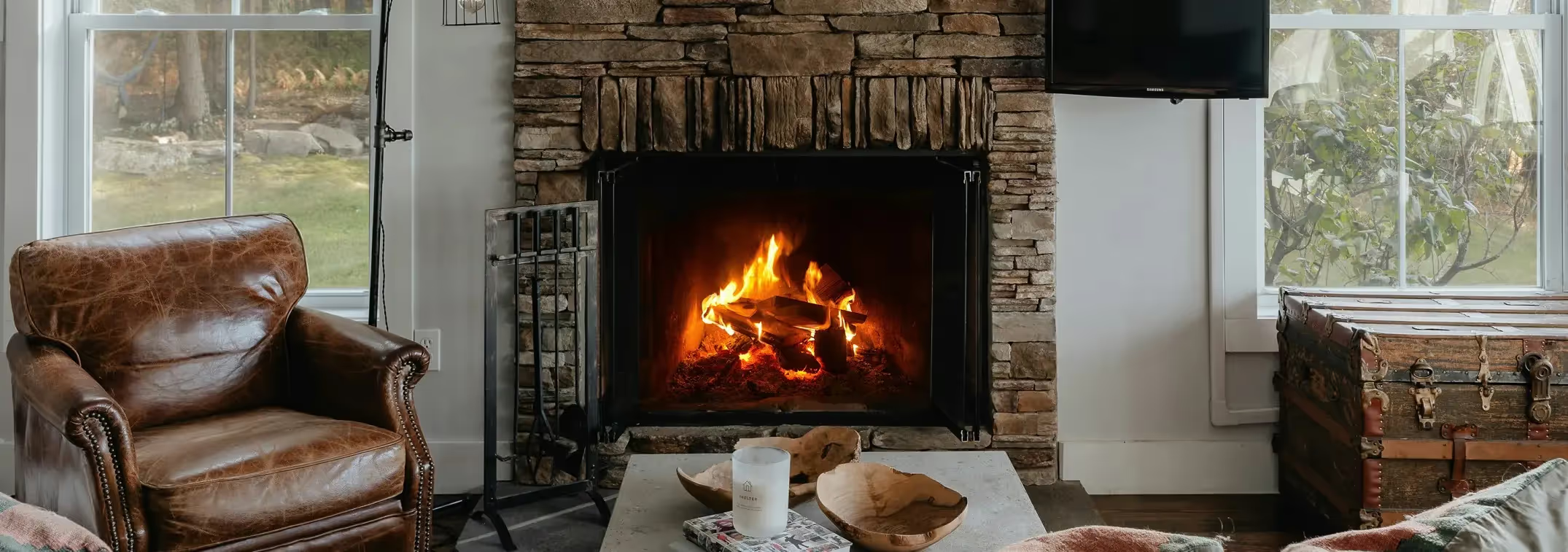
When you're sitting in your living room on a January evening in Columbus or Cincinnati, watching snow pile up outside, there's something magical about the idea of a crackling stone fireplace. But before you start dreaming about cozy nights by the fire, let's talk about what a stone fireplace actually costs in Ohio — and more importantly, what drives those costs up or down.
After 70+ years in the natural stone business, we've helped thousands of Ohio homeowners navigate these decisions with limestone fireplace surrounds that stand the test of time. Here's what we've learned about stone fireplace costs, and what you should know before you start calling contractors.
The Real Range: What Stone Fireplaces Cost in Ohio

Let's start with the numbers you're probably looking for. More Ohio homeowners than ever are choosing stone fireplaces for their durability, timeless appeal, and ability to handle our harsh winters. The cost ranges vary significantly based on your choices, but here's what you can realistically expect:
- Stone veneer fireplace (most popular choice): Stone veneer fireplaces cost $3,500 to $8,500 to install. They offer the look of natural stone with lower labor costs and easier installation.
- Full masonry stone fireplace (built from scratch): A full masonry fireplace runs from $8,000 to $18,000. It’s a long-lasting, premium build that delivers timeless appeal and maximum durability.
- Stone fireplace surround only (existing fireplace): Upgrading an existing fireplace with a new surround costs $2,800 to $6,500. It’s a cost-effective way to refresh your space with stone.
Overall, most homeowners in Ohio spend between $3,500 and $12,000, depending on size, material, and installation complexity. Understanding these factors helps you budget smartly and avoid surprise costs that can derail your project.
What Drives Stone Fireplace Costs in Ohio
Several key factors determine your final stone fireplace cost. Let's break down each element so you can make an informed decision that fits your budget and style preferences.
Stone Type and Quality: Real vs. Manufactured Stone
Choosing between natural stone and manufactured stone veneer represents your biggest cost decision. Each option offers distinct advantages, and understanding the differences helps you select the best stone for your fireplace.
Natural stone costs more upfront but offers unmatched authenticity and longevity. Manufactured stone veneer provides excellent value, especially for larger installations where material costs can quickly add up.
Size and Complexity Considerations
Your fireplace size directly impacts both material needs and labor costs. Larger installations require more stone, additional structural support, and extended installation time.
Complex designs with custom cuts, multiple stone types, or intricate patterns can increase costs by 25-40%. Simple, clean designs maximize your budget while still creating stunning results.
Fireplace Fuel Type Impacts Everything
Your choice of fuel type affects everything from natural stone or stone veneer installation requirements to ongoing maintenance costs. Each option has distinct cost implications and practical considerations.
Wood-burning fireplaces create an authentic ambiance but require the most extensive installation work. On the other hand, gas fireplaces offer convenience and consistent heat output, while electric options provide the easiest installation process. Ultimately, the right choice depends on your budget, lifestyle, and whether you're working with a new build or upgrading an existing fireplace.
Installation Complexity (Where Costs Surprise People)
Labor costs in Ohio typically range from $45 to $150 per hour, but several factors can drive these costs significantly higher. As skilled mason availability decreases, labor costs increase substantially across the state. Understanding these variables helps you budget accurately and avoid surprise expenses.
Key cost drivers include:
- New construction vs. existing fireplace: New construction often costs 20% more due to structural requirements.
- Access challenges: Tight spaces and second-floor installations increase labor costs substantially.
- Freeze-thaw requirements: Proper foundation and drainage add $500-$1,500 to ensure Ohio weather durability.
- Local building codes: Some Ohio counties require specific permits and inspections (see the outline requirements for Ohio residential building codes).
Experienced contractors account for these factors in their estimates. Inexperienced installers often underestimate complexity, leading to cost overruns and potential safety issues.
Location: Indoor vs. Outdoor Fireplace
Outdoor fireplaces typically cost 15-25% more than indoor installations due to weather protection requirements, additional foundation work, and specialized materials that handle freeze-thaw cycles. Exterior installations require enhanced structural support and weather-resistant finishes that increase the overall cost. However, outdoor fireplaces create exceptional entertainment spaces and often provide better return on investment in Ohio's climate.

The Hidden Costs Nobody Talks About
Beyond the obvious stone and labor costs, several additional expenses can significantly impact your total project budget. Smart planning accounts for these often-overlooked elements.
Additional Components That Add Up
Many homeowners focus solely on stone costs and forget about essential components that complete their fireplace project. These elements can add a substantial expense if not planned properly.
Essential additions include:
- Custom mantels ($300 to $3,000): Adds style and presence. Prices vary based on material and detailing.
- Hearths ($500 to $2,500): Essential for function and safety. Larger or stone hearths cost more than basic brick alternatives.
- Integrated surrounds ($2,000+): Combines mantel, wall, and framing. Custom stonework drives up labor and material costs.
- Chimney or flue ($1,000 to $3,500): Needed for wood-burning fireplaces. Costs vary by design and building code requirements.
Remember, these components aren't optional extras — they're necessary elements that ensure proper function and safety. Quality components also enhance your home's resale value more than cutting corners on essential elements.
Maintenance and Long-Term Costs
Smart homeowners consider ongoing fireplace maintenance costs when budgeting for their projects. Different fireplace types require varying levels of care, and proper maintenance protects your investment while ensuring safe operation and optimal heating performance.
Annual maintenance costs typically include:
- Wood-burning fireplaces: $200-$600 yearly for cleaning, inspection, and minor repairs.
- Gas fireplaces: $100-$350 annually for service calls and efficiency checks.
- Electric fireplace units: $50-$150 for basic maintenance and component replacement.
- Stone sealing: $150-$400 every 3-5 years to protect against moisture damage.
Regular limestone fireplace maintenance prevents costly repairs and extends your stone's lifespan significantly. Neglecting maintenance often leads to expensive restoration work that far exceeds preventive care costs.
Design Choices That Impact Cost
Your design decisions dramatically influence both upfront costs and long-term satisfaction. Understanding how different approaches affect pricing helps you create stunning fireplace design ideas that fit your budget perfectly.
Budget-Conscious Approach
Smart cost management doesn't mean sacrificing quality or style. Strategic material choices and design simplifications can create beautiful results while controlling expenses.
Effective strategies include:
- Focal point emphasis: Use premium natural stone for the fireplace face and hearth, then complement with less expensive materials for the surrounding areas.
- Strategic veneer placement: Apply manufactured stone veneer to larger wall sections while using real stone for high-impact areas.
- Local material selection: Choose locally-sourced limestone to minimize freight costs while supporting regional suppliers.
This approach typically reduces material costs by 30-40% compared to full natural stone installations while maintaining authentic appearance and quality construction standards.
Premium Approach
Investment in premium materials and custom details creates heirloom-quality installations that enhance your home's character and value for generations.
Premium elements include:
- Full natural stone construction: Using authentic stone throughout creates unmatched beauty and authenticity that improves with age.
- Custom fabrication services: Hand-cut elements, unique shapes, and personalized details that reflect your style preferences in any form you desire.
- Integrated design elements: Seamlessly incorporated mantels, surrounds, and hearths that appear carved from single stone blocks.
Transform your vision into reality with materials that showcase nature's beauty and expert craftsmanship. Our portfolio demonstrates the stunning possibilities when quality materials meet skilled installation:
#gallery_start
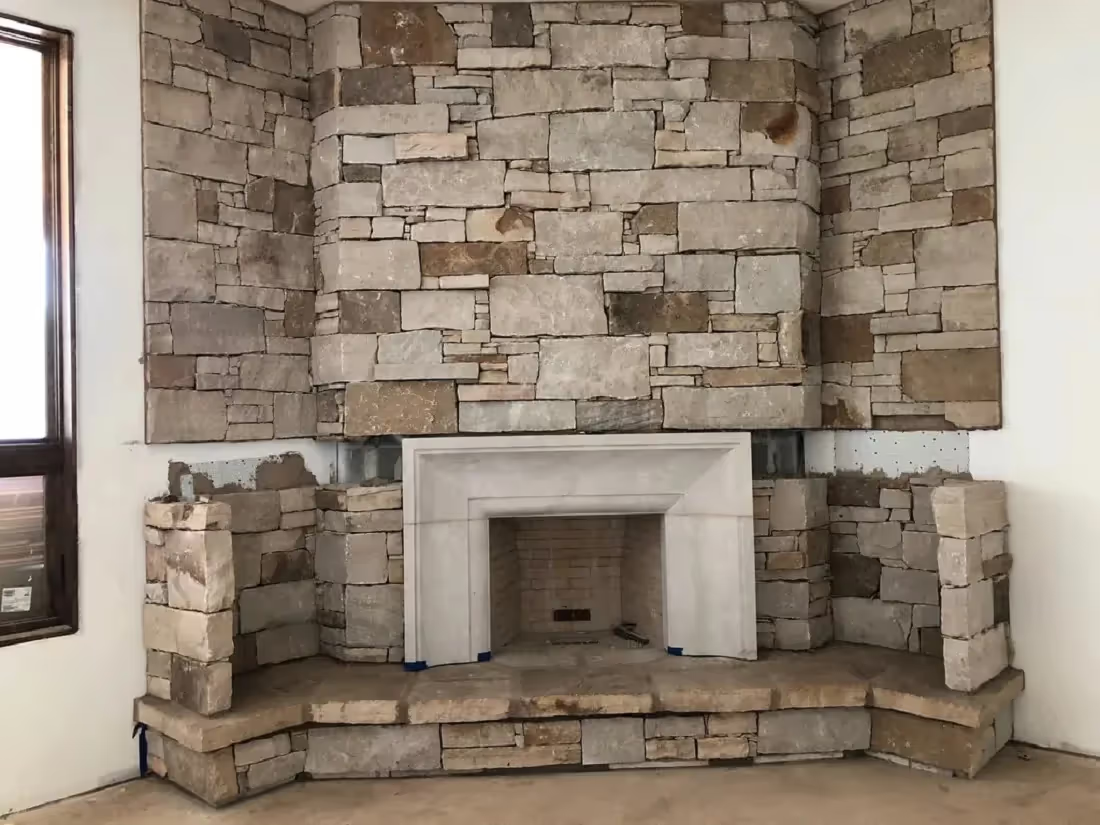

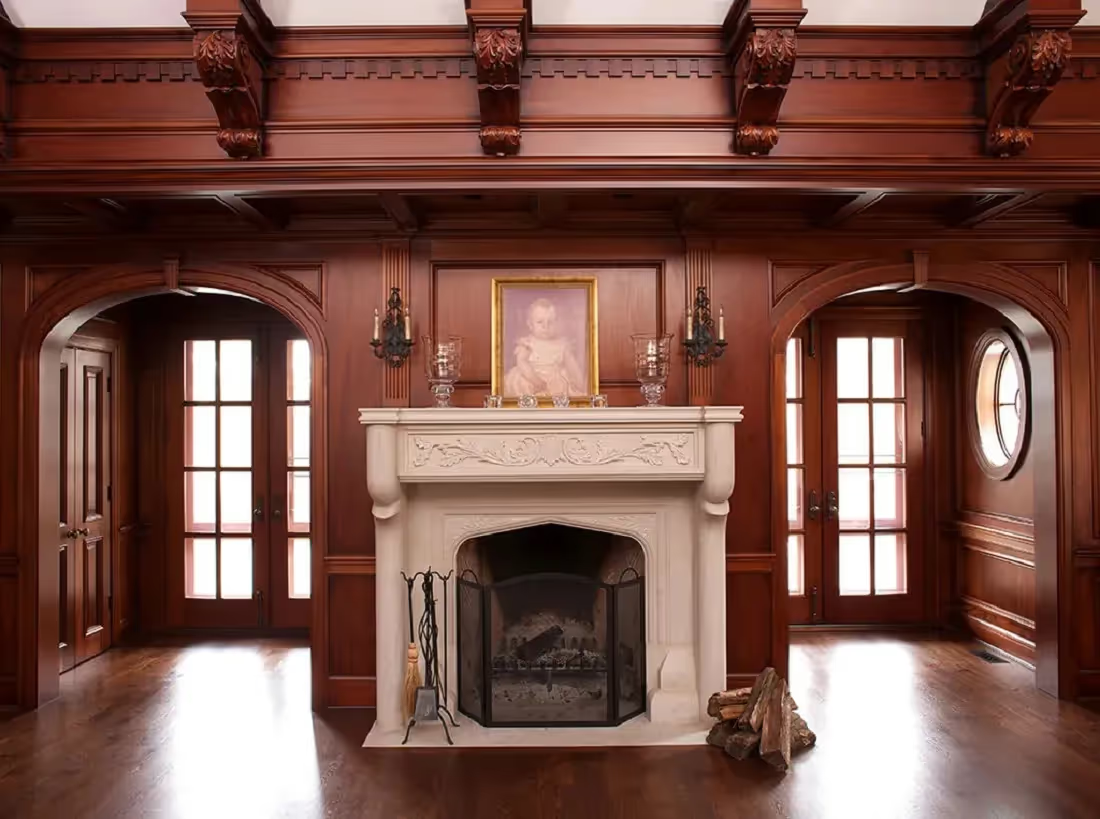
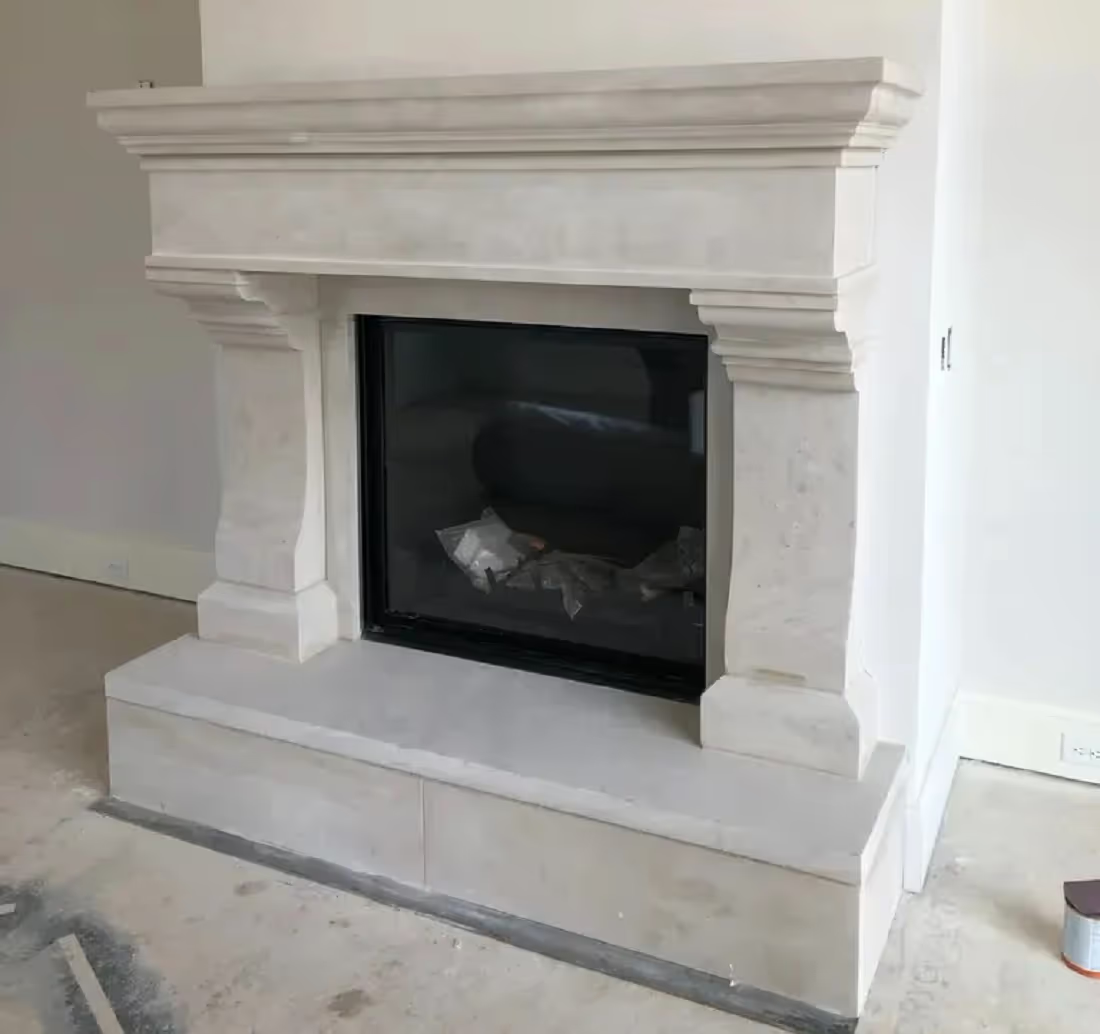
#gallery_end
Smart Budgeting for Your Ohio Stone Fireplace
Successful fireplace projects start with realistic budgeting that accounts for all cost factors. Use the information above to create accurate estimates and avoid common financial pitfalls that derail projects.
#spoilers_start
Budget Breakdown for Planning
Understanding how professionals allocate project costs helps you evaluate quotes and identify potential issues before they become expensive problems. Here's how experienced contractors typically structure stone fireplace budgets:
For a $10,000 stone fireplace project.
- Stone materials (45-55%): $4,500-$5,500 covers your primary stone, mortar, and basic installation supplies.
- Skilled labor (30-40%): $3,000-$4,000 pays for experienced masons, proper installation techniques, and code compliance.
- Additional components (12-18%): $1,200-$1,800 includes mantels, hearths, and finishing elements that complete your design.
- Permits and inspections (3-7%): $300-$700 ensures legal compliance and safety verification.
#spoilers_end
#spoilers_start
Money-Saving Strategies
Strategic planning and smart timing can significantly reduce your stone fireplace costs without compromising quality or safety.
Proven cost-reduction methods include.
- Seasonal scheduling: Winter installations often cost 10-20% less due to reduced contractor demand and material availability.
- Material bundling: Combining your fireplace project with other stonework (patios, retaining walls) reduces per-project overhead costs.
- Local sourcing: Choosing regional limestone and sandstone eliminates freight charges while supporting Ohio businesses.
- Simplified designs: Clean, geometric patterns require less cutting and fitting time compared to complex arrangements.
#spoilers_end
Remember: The lowest bid isn't always the best value, and the highest bid isn't always the best quality. Focus on contractors who understand Ohio's specific requirements and have experience with your chosen materials.
Build Your Dream Fireplace with Stone Center
A stone fireplace is more than just a home improvement — it's an investment in your family's comfort and your home's character. Whether you're dreaming of a cozy indoor fireplace for those cold Ohio winters or an outdoor fireplace for summer entertaining, understanding the true costs helps you make the right decision for your home and budget.
Stone Center has served as Ohio's trusted natural stone supplier for over seven decades, helping Columbus and Cincinnati homeowners create spaces they treasure. From custom limestone fabrication to complete design consultation, we transform your fireplace dreams into a lasting reality.
Ready to explore your possibilities? Contact us to discuss your vision, and we’ll provide realistic cost estimates tailored to your home and preferences.
FAQ
.avif)
Jon, the owner of Stone Center, is a knowledgeable expert in natural stone products, specializing in various types of stone for landscaping and architectural projects. Passionate about promoting the beauty and versatility of natural stone, Jon aims to use these blogs to inspire readers with creative ideas to upgrade their homes.
How much does it cost to get a stone restored?
How much you end up spending to restore stone varies on the type of stone, the technique, and the stone’s current condition. Stone in good condition will cost less to restore, whereas stone that has a lot of wear and tear may require a longer restoration.






